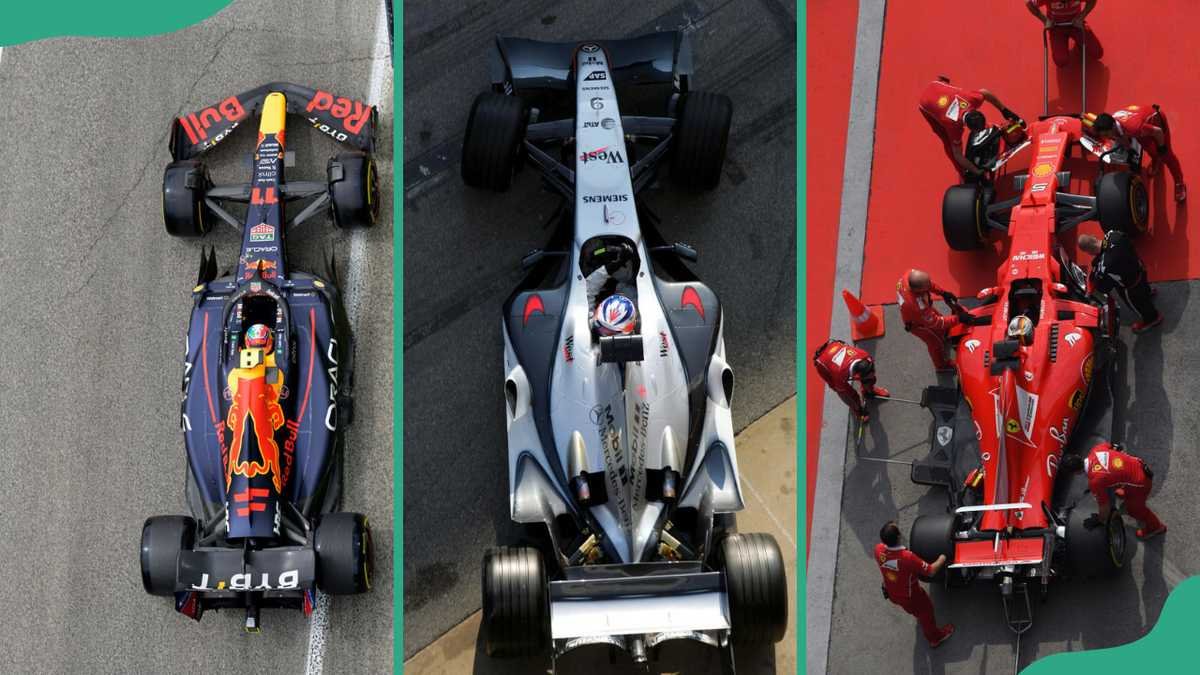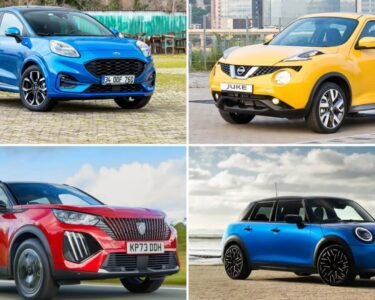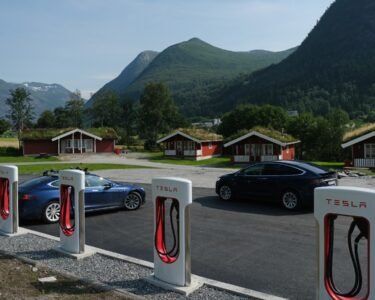The Red Bull RB18 holds the record for the fastest top speed in an official race, clocking 231.4 mph (372.5 km/h). Other speed legends include the Mercedes W11, Ferrari SF70H, and Williams FW26, all reaching over 223.7 mph (360 km/h) during Grand Prix events. Explore the fastest F1 cars in history based on their official race speeds.
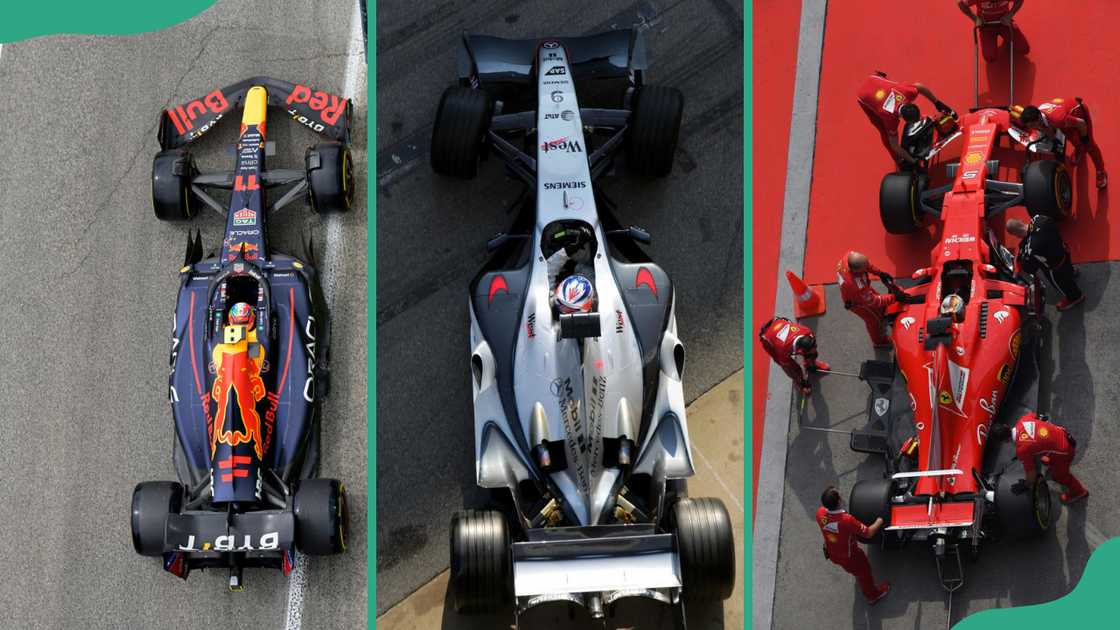
Source: Getty Images
TABLE OF CONTENTS
Key takeaways
- The Red Bull RB18 holds the record for the fastest top speed in an official F1 race at 231.5 mph (372.5 km/h).
- V10 and hybrid-era cars dominate the list thanks to powerful engines and advanced aerodynamics.
- All top speeds listed are from official F1 races, not private tests or promotional runs.
Fastest F1 cars in history
We strive to provide our readers with valuable insights and information through our various rankings and lists. In compiling this list of the fastest F1 cars, information was obtained from various reputable sources, including Motor Sport Magazine, Slash Gear, and Autosport. Only speeds from official F1 races have been considered and not tests or promotional runs.
| F1 car | Top speed |
| Red Bull RB18 (2022) | 231.4 mph (372.5 km/h) |
| McLaren MP4-20 (2005) | 229.9 mph (370.1 km/h) |
| Ferrari SF70H (2017) | 225.2 mph (362.4 km/h) |
| Mercedes W11 (2020) | 223.6 mph (360 km/h) |
| Ferrari SF71H (2018) | 222.9 mph (358.8 km/h) |
| Ferrari F2004 (2004) | 223.6 mph (360 km/h) |
| Williams BMW FW26 (2004) | 221.8 mph (357 km/h) |
| Red Bull RB7 (2011) | 211 mph (340 km/h) |
| McLaren MP4/4 (1988) | 211 mph (340 km/h) |
| Brawn BGP 001 (2009) | 205 mph (330 km/h) |
| Williams FW14B (1992) | 198.8 mph (320 km/h) |
| Williams FW10(B) (1985) | 195.7 mph (315 km/h) |
| Lotus 78 (1978) | 189.5 mph (305 km/h) |
| Lotus 49 (1967) | 180.2 mph (290 km/h) |
| Cooper T51 (1959) | 161.5 mph (260 km/h) |
15. Cooper T51 (1959) – 161.5 mph (260 km/h)

Source: Getty Images
- Constructor: Cooper Car Company
- Debut: 1959 Monaco Grand Prix
- Wins: 5 out of 24
- Notable drivers: Stirling Moss, Jack Brabham, Bruce McLaren, Phil Hill, Wolfgang Von Trips, Tony Brooks, Maurice Trintignant, Masten Gregory
As the first rear-engined F1 car to win a championship, the Cooper T51 was innovative for its time. While not blisteringly fast by today’s standards, its 161.5 mph (260 km/h) top speed was impressive in the late 50s, dominating most vintage cars. It marked a pivotal change in F1 car design.
14. Lotus 49 (1967) – 180.2 mph (290 km/h)
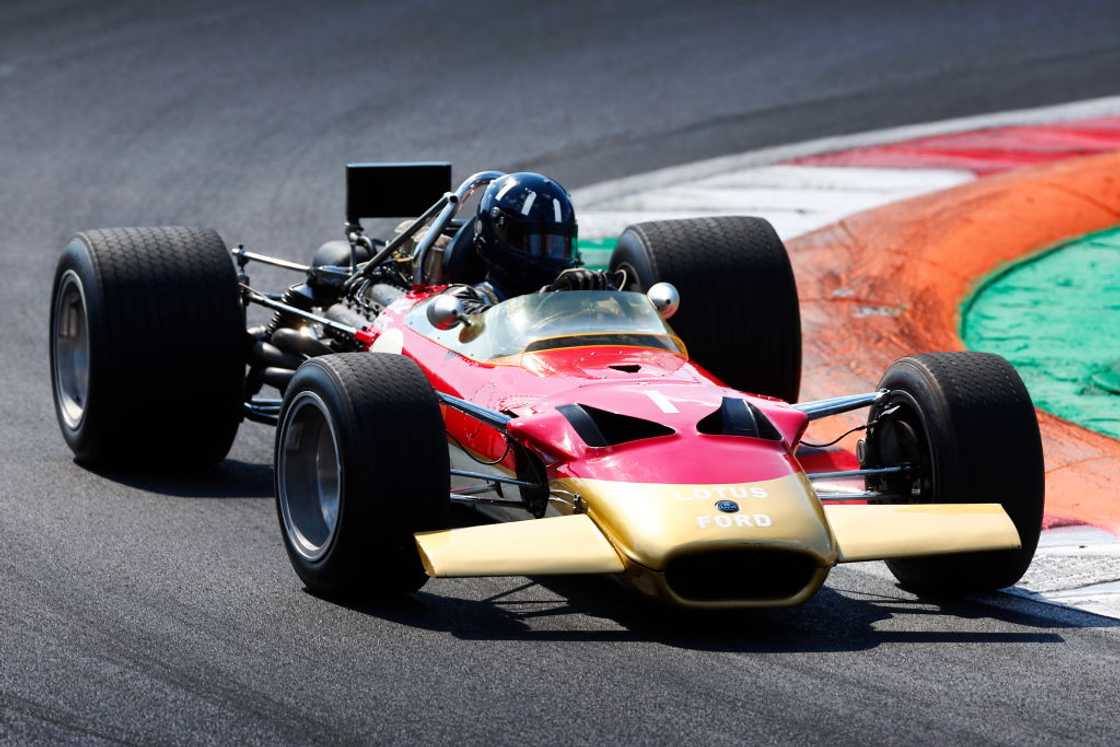
Source: Getty Images
- Constructor: Lotus
- Debut: 1967 Dutch Grand Prix
- Wins: 12 out of 42
- Notable drivers: Jim Clark, Graham Hill, Mario Andretti, Jochen Rindt, Jo Siffert, Emerson Fittipaldi
Jim Clark and Graham Hill’s Lotus 49 introduced the revolutionary Cosworth DFV engine, helping it hit nearly 180.2 mph (290 km/h). It dominated in its time despite safety and tyre limitations. A true engineering leap forward for the late 1960s.
13. Lotus 78 (1978) – 189.5 mph (305 km/h)
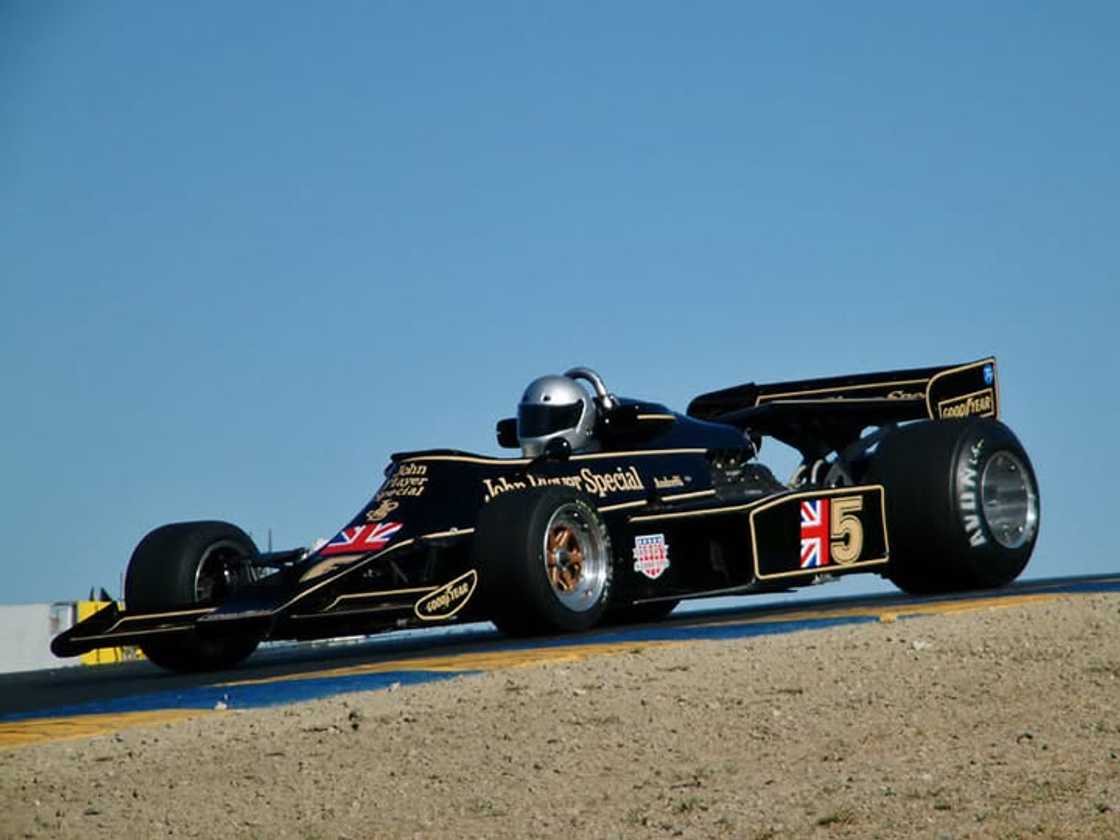
Source: UGC
- Constructor: Team Lotus
- Debut: 1977 Argentine Grand Prix
- Wins: 7 out of 33
- Notable drivers: Mario Andretti, Gunnar Nilsson, Ronnie Peterson, Héctor Rebaque
This ground-effect pioneer wasn’t focused solely on top speed but still managed 189.5 mph (305 km/h) on fast circuits. American former F1 driver Mario Andretti used it to win the 1978 World Championship. Its aerodynamic innovation changed F1 forever.
12. Williams FW10(B) (1985) – 195.7 mph (315 km/h)
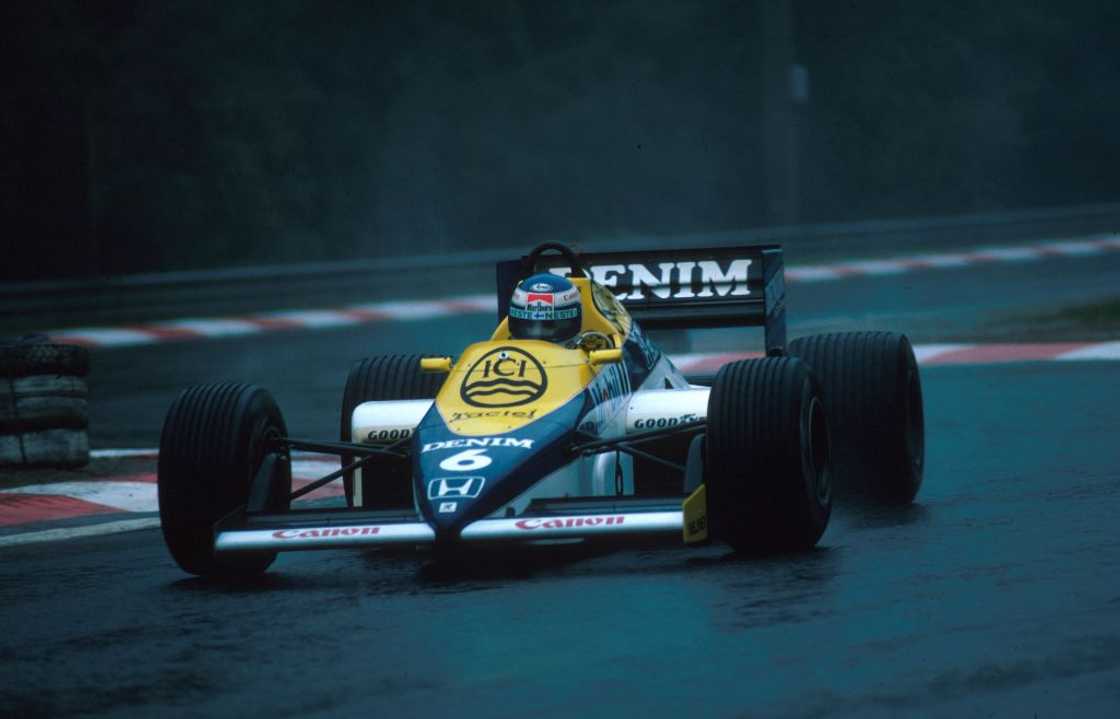
Source: Getty Images
- Constructor: Williams/Honda
- Debut: 1985 Brazilian Grand Prix
- Wins: 4 out of 16
- Notable drivers: Nigel Mansell, Keke Rosberg
With Honda’s turbocharged V6 engine, the FW10(B) reached approximately 195.7 mph (315 km/h) in races. Though not a title contender, it laid the groundwork for future Williams-Honda dominance. It’s an underrated high-speed machine from the turbo era.
11. Williams FW14B (1992) – 198.8 mph (320 km/h)
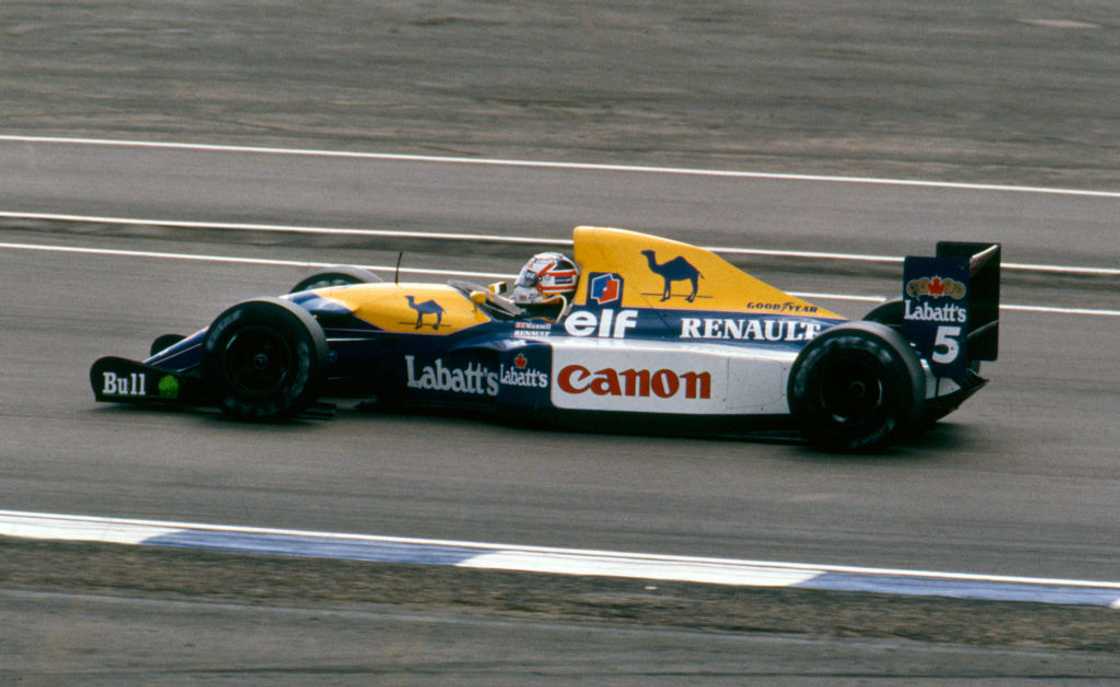
Source: Getty Images
- Constructor: Williams/Renault Sport
- Debut: 1991 United States Grand Prix
- Wins: 17 out of 32
- Notable drivers: Nigel Mansell, Riccardo Patrese
This revolutionary car used active suspension and semi-automatic gearboxes to great effect. Despite its complex electronics, it was capable of hitting 198.8 mph (320 km/h) on tracks like Monza. It helped Nigel Mansell dominate the 1992 season.
10. Brawn BGP 001 (2009) – 205 mph (330 km/h)

Source: Getty Images
- Constructor: Honda/Brawn GP
- Debut: 2009 Australian Grand Prix
- Wins: 8 out of 17
- Notable drivers: Jenson Button, Rubens Barrichello
Jenson Button’s Brawn BGP 001 reached top speeds of around 205 mph (330 km/h), especially at low-downforce tracks like Monza. While not built solely for top-end speed, its double diffuser gave it a unique performance advantage. It remains one of the sport’s most surprising success stories.
9. McLaren MP4/4 (1988) – 211 mph (340 km/h)
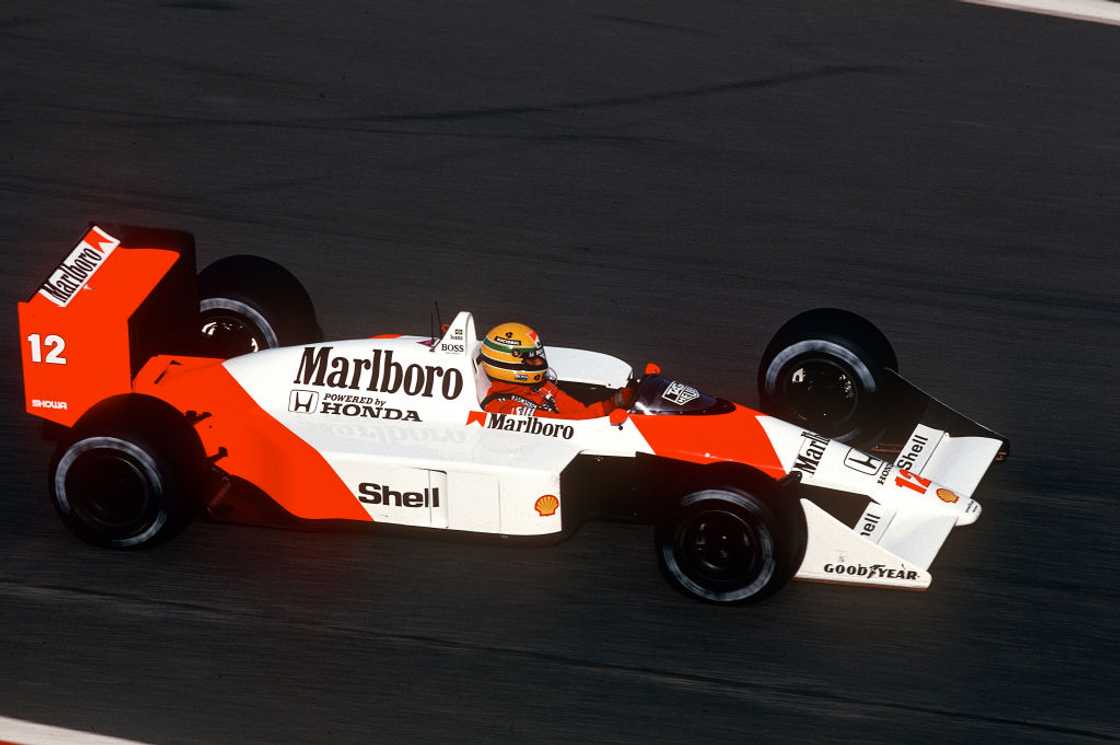
Source: Getty Images
- Constructor: McLaren, Honda
- Debut: 1988 Brazilian Grand Prix
- Wins: 15 out of 16
- Notable drivers: Alain Prost, Ayrton Senna
Arguably the most dominant F1 car ever, the MP4/4 reached high speeds despite being from the late 80s. Ayrton Senna and Alain Prost used its Honda turbo engine to clock over 211 mph (340 km/h) at Hockenheim. Its combination of power and minimal drag made it revolutionary.
8. Red Bull RB7 (2011) – 211 mph (340 km/h)
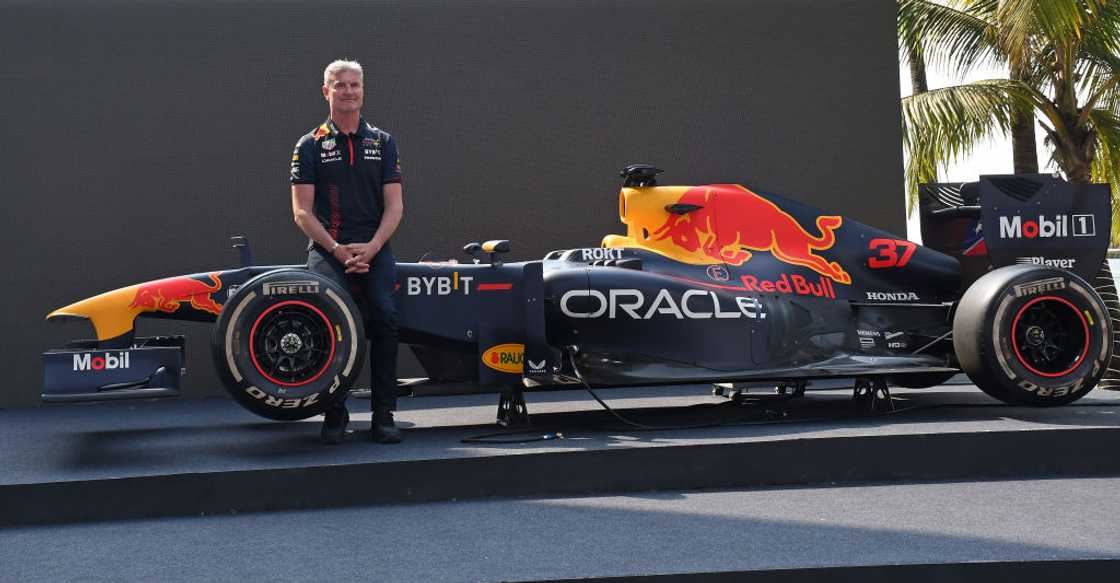
Source: UGC
- Constructor: Red Bull
- Debut: 2011 Australian Grand Prix
- Wins: 12 out of 19
- Notable drivers: Sebastian Vettel, Mark Webber
Sebastian Vettel’s championship-winning RB7 achieved speeds of over 211 mph (340 km/h) at circuits like Spa and Monza. Although it wasn’t the fastest in a straight line, its balance of speed and downforce made it nearly unbeatable. Its Renault engine and Adrian Newey design were the perfect combo.
7. Williams BMW FW26 (2004) – 221.8 mph (357 km/h)

Source: Getty Images
- Constructor: Williams
- Debut: 2004 Australian Grand Prix
- Wins: 1 out of 18
- Notable drivers: Juan Pablo Montoya, Ralf Schumacher, Marc Gené, Antônio Pizzonia
This V10-powered Williams, with its powerful BMW engine, reached speeds of over 221.8 mph (357 km/h) in race conditions. While its walrus nose design was controversial, its straight-line speed was never in doubt. It holds some of the fastest trap speeds ever recorded at Monza.
6. Ferrari F2004 (2004) – 223.6 mph (360 km/h)

Source: Getty Images
- Constructor: Scuderia Ferrari
- Debut: 2004 Australian Grand Prix
- Wins: 15 out of 20
- Notable drivers: Michael Schumacher, Rubens Barrichello
Michael Schumacher’s legendary Ferrari F2004 remains iconic not just for its dominance but for its raw speed. It matched modern hybrid cars in top speed at Monza during the V10 era. This machine still holds several lap records on circuits like Spa and Suzuka.
5. Ferrari SF71H (2018) – 222.9 mph (358.8 km/h)

Source: Getty Images
- Constructor: Ferrari
- Debut: 2018 Australian Grand Prix
- Wins: 6 out of 21
- Notable drivers: Sebastian Vettel, Kimi Räikkönen
This car reached impressive speeds at Monza thanks to Ferrari’s emphasis on straight-line performance that year. Vettel and Räikkönen frequently clocked above 217.5 mph (350 km/h), pushing the team to multiple victories. The Ferrari SF71H was also highly competitive in qualifying.
4. Mercedes W11 (2020) – 223.6 mph (360 km/h)

Source: Getty Images
- Constructor: Mercedes
- Debut: 2020 Austrian Grand Prix
- Wins: 13 out of 17
- Notable drivers: Lewis Hamilton, George Russell, Valtteri Bottas
The W11 dominated the 2020 season and showcased its speed at Spa-Francorchamps and Monza. With its revolutionary dual-axis steering (DAS) and powerful Mercedes hybrid engine, the W11 is the best car the team has ever produced, combining peak performance with engineering finesse.
3. Ferrari SF70H (2017) – 225.2 mph (362.4 km/h)

Source: Getty Images
- Constructor: Ferrari
- Debut: 2017 Australian Grand Prix
- Wins: 5 out of 20
- Notable drivers: Sebastian Vettel, Kimi Räikkönen
Sebastian Vettel hit this high mark in Baku, showcasing Ferrari’s power unit and low-downforce setup. The SF70H thrived on high-speed street circuits and proved to be a real threat to Mercedes that season. It’s among the fastest hybrid-era cars in official race trim.
2. McLaren MP4-20 (2005) – 229.9 mph (370.1 km/h)
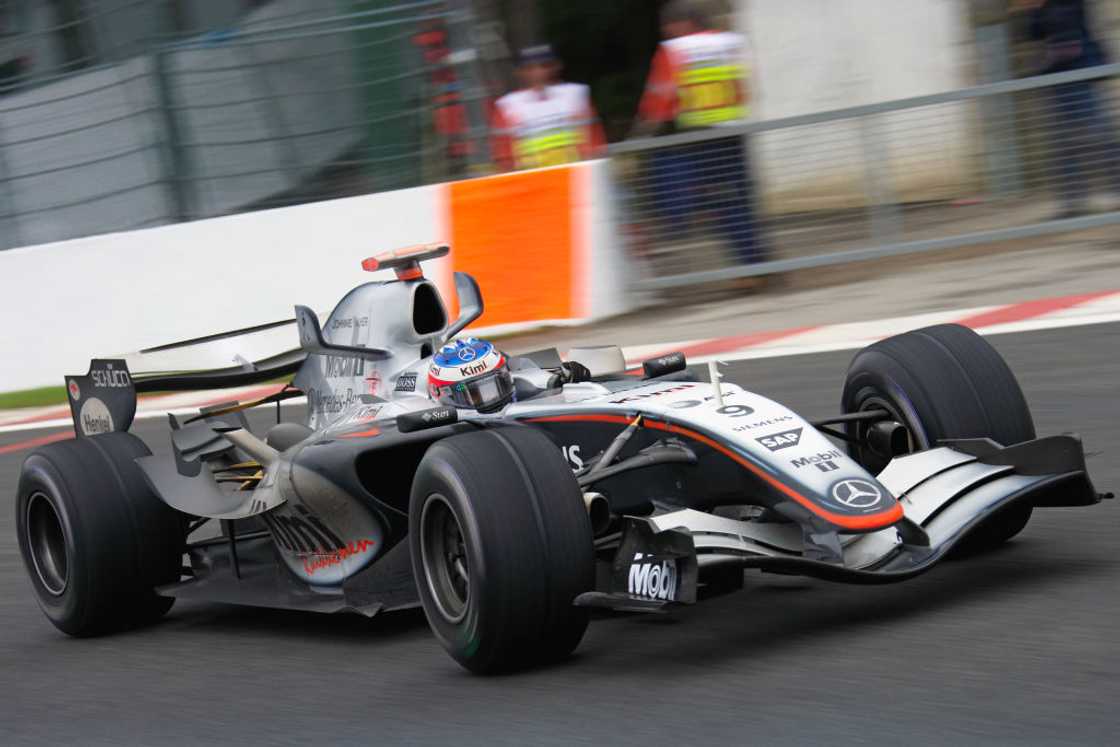
Source: Getty Images
- Constructor: McLaren
- Debut: 2005 Australian Grand Prix
- Wins: 10 out of 19
- Notable drivers: Kimi Räikkönen, Juan Pablo Montoya, Pedro de la Rosa, Alexander Wurz
Driven by Kimi Räikkönen at Monza, the MP4-20 was a V10-powered beast that clocked 229.9 mph (370.1 km/h) speed during the race. It combined raw power with clever aerodynamics to become one of the quickest F1 machines ever. Despite reliability issues, it consistently ranked among the fastest on track.
1. Red Bull RB18 (2022) – 231.4 mph (372.5 km/h)

Source: Getty Images
- Constructor: Red Bull Racing
- Debut: 2022 Bahrain Grand Prix
- Wins: 17 out of 22
- Notable drivers: Max Verstappen, Sergio Pérez
Achieved by Sergio Pérez at the 2022 Italian Grand Prix in Monza, the Red Bull RB18 became the fastest F1 car in history during an official race. The car has also been used by Max Verstappen in multiple races. With its Honda power unit and aerodynamic efficiency, the RB18 redefined modern F1 performance.
What is the fastest F1 car ever made?
The Red Bull RB18 is the fastest F1 car in history during an official race, clocking 231.4 mph (372.5 km/h) at the 2022 Mexican Grand Prix, driven by Sergio Pérez.
Which is the fastest car in F1 right now?
McLaren’s MCL39 has been consistently topping qualifying and setting race pace in 2025. Lando Norris secured multiple pole positions and fastest laps, and the team leads the DHL Fastest Lap Award standings.
Is the W11 the fastest F1 car ever?
The Mercedes W11 (2020) is widely regarded as one of the greatest and most dominant F1 cars in history, but it is not the fastest ever in terms of top speed during a race.
Which F1 era produced the fastest cars?
While the V10 era (early 2000s) delivered raw power, the hybrid era (2014–present) has produced the fastest overall cars, thanks to advanced technology, energy recovery systems, and improved aerodynamic design.
Why isn’t top speed the most important factor in F1 performance?
Top speed matters on certain tracks, but cornering speed, braking performance, and tyre management are often more crucial. That’s why cars with lower top speeds can still win races through better all-around performance.
How do modern F1 cars achieve such high speeds?
Modern F1 cars combine hybrid turbocharged engines, aerodynamic efficiency, lightweight materials, and features like DRS (Drag Reduction System) to reach extreme speeds, especially on low-downforce circuits like Monza or Baku.
Are NASCAR cars faster than F1 cars?
Formula 1 cars are significantly faster than NASCAR cars in terms of top speed, acceleration, and cornering ability, largely due to their cutting-edge technology and design focus on performance.
F1 cars have consistently shattered speed barriers. While the fastest F1 car is the Red Bull RB18, it shares the spotlight with other iconic machines like the Mercedes W11 and McLaren MP4-20. The cars represent the pinnacle of motorsport engineering and the eternal chase for perfection on the racetrack.
Legit.ng recently published a compilation of the highest-horsepower cars in the world. The world’s most powerful cars push the limits of engineering and performance. These machines boast horsepower figures well beyond 1,000.
The best-performing cars in the world have some of the most advanced engines powered by high horsepower. From Bugatti to Koenigsegg, they redefine what supercars and hypercars can do. Read this article about cars with the highest horsepower and excellent performance.
Proofreading by Kola Muhammed, copy editor at Legit.ng.
Source: Legit.ng

